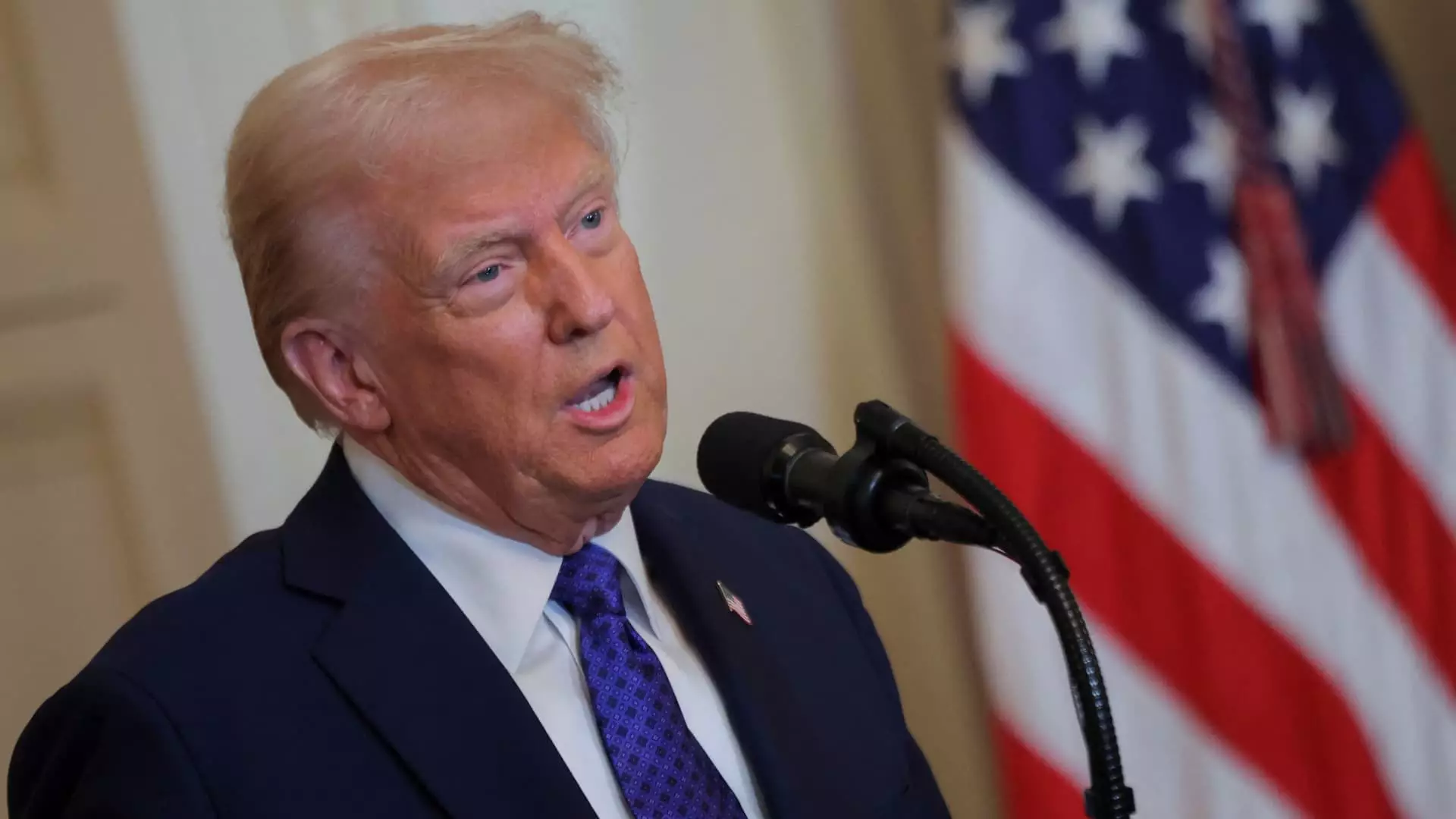The political and economic climate of the United States can often lead to drastic shifts in market behaviors. As the Trump administration initiated its policies, two particular sectors—big banks and small-cap stocks—emerged as potential beneficiaries of a favorable economic environment. Through an examination of the existing predictions and trends in both sectors, we can uncover the underlying dynamics that could shape market performance in the coming years.
In the realm of finance, analysts observe a keen anticipation surrounding the potential for deregulation. As John Davi of Astoria Portfolio Advisors has noted, the financial sector was already on the cusp of transformation prior to Trump’s presidency. This sense of optimism stems from the idea that relaxed regulations could pave the way for enhanced earnings and a surge in initial public offerings (IPOs) and mergers and acquisitions (M&A). This transformation could lead to a decade-long period of growth for key players in the banking industry.
Remarkably, the momentum of major money center banks, such as Goldman Sachs, JPMorgan Chase, and Bank of America, signals a bullish outlook. These institutions have recently experienced record high stock prices, showcasing a palpable confidence among investors. Davi recommends the Invesco KBW Bank ETF, which strategically focuses on these heavyweight financial institutions. With nearly 10% growth since the start of the year and an impressive 49% increase over the past year, such ETFs highlight the compelling nature of the current banking landscape.
While the financial sector rides the wave of deregulation, small-cap stocks also have an opportunity to shine, particularly in the context of reshoring and trade policies. According to Todd Rosenbluth from VettaFi, small-cap businesses exhibit resilience amid shifting tariffs and a growing trend to strengthen domestic production. American-focused small caps, with less exposure to international markets, stand to gain from policies that prioritize local manufacturing and services.
Investors looking to capitalize on this potential can explore specialized small-cap ETFs. The T. Rowe Price Small-Mid Cap ETF and the Neuberger Berman Small-Mid Cap ETF are two noteworthy options. These funds provide exposure to quality companies with strong fundamentals that could benefit from economic policies emphasizing domestic growth. The VictoryShares Small Cap Free Cash Flow ETF also deserves mention; with its emphasis on companies exhibiting robust free cash flow, it signifies a prudent investment strategy.
Rosenbluth underscores the importance of selecting stocks that meet strict quality benchmarks, which is a targeted approach towards identifying investment opportunities with promising growth prospects. Such prudent strategies can invigorate small-cap portfolios, especially considering that the VictoryShares ETF has matched a substantial performance upgrade over the past year, achieving almost 10% growth.
The overarching narrative of the Trump administration’s impact on these two sectors encapsulates a broader economic shift. Deregulation and domestic policy favoring American manufacturing serve as catalysts for substantial investment interest. While large financial institutions revel in the prospects of enhanced futures through deregulation, small-cap companies are dynamically positioning themselves to capitalize on an America-first economic framework.
Nevertheless, potential investors must approach these sectors with both enthusiasm and caution. It’s essential to remain vigilant about the evolving regulatory landscape and its long-term implications on financial practices. Similarly, small-cap stocks can be volatile and are subject to market whims, warranting careful consideration.
Overall, the predictions surrounding the Trump administration reveal a dual-faceted opportunity for investors in both big banks and small-cap stocks. While many financial firms stand on the threshold of a new era marked by deregulation and growth, the smaller companies offer compelling narratives grounded in local economic resilience. As policies evolve, astute investors will do well to explore the potential within these sectors, leveraging both emerging trends and established market fundamentals. Knowledge of these dynamics can prove invaluable in navigating an ever-shifting investment landscape.

